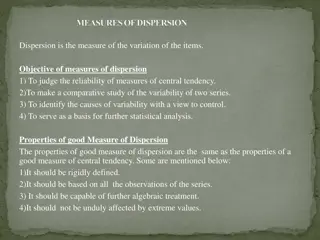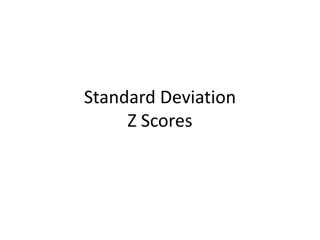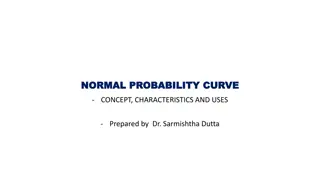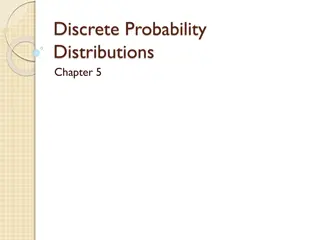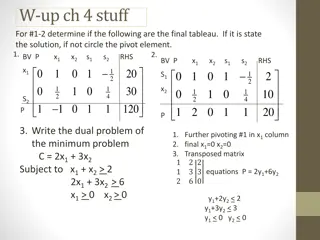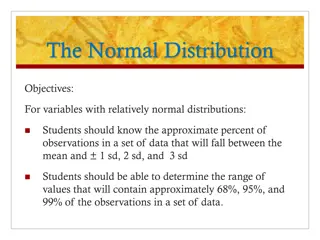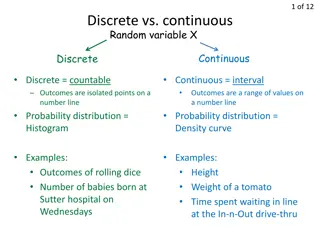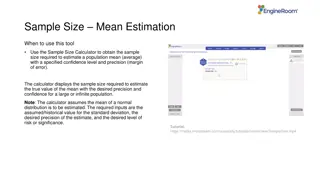
Absolute Measure of Dispersion: Mean Deviation Calculation Explained
Discover the concept of mean deviation as an absolute measure of dispersion in statistics. Learn how to calculate mean deviation and its coefficient from mean in individual, discrete, and continuous series, along with visual aids for better understanding.
Uploaded on | 1 Views
Download Presentation

Please find below an Image/Link to download the presentation.
The content on the website is provided AS IS for your information and personal use only. It may not be sold, licensed, or shared on other websites without obtaining consent from the author. If you encounter any issues during the download, it is possible that the publisher has removed the file from their server.
You are allowed to download the files provided on this website for personal or commercial use, subject to the condition that they are used lawfully. All files are the property of their respective owners.
The content on the website is provided AS IS for your information and personal use only. It may not be sold, licensed, or shared on other websites without obtaining consent from the author.
E N D
Presentation Transcript
Mean deviation Mean deviation is an absolute measure of dispersion which is assessed on the basis of the average of the distribution. It is the sum of absolute deviation from an average divided by the number of items. It is also known as average deviation.
Coefficient of mean deviation As we know that mean deviation is an absolute measure of dispersion, Thus, in order to transform it into a relative measure, it is divided by the average from which it has been calculated. It is then known as the coefficient of mean deviation. Thus, Coefficient of mean deviation from mean =?? ? And ?? Coefficient of mean deviation from median = ?(??????) Note:- Mode is not a stable average so, it is not used to calculate mean deviation and coefficient of mean deviation.
Calculation of mean deviation and its Coefficient The calculation of mean deviation and its Coefficient in different series is discussed below ? ? In individual series Calculation of mean deviation of the value that is ? = Calculate the difference between each value and the arithmetic mean. All differences are considered to be positive. These differences are called deviations and denoted as |D|. We find sum of all deviation, i.e. |?| Now, mean deviation is calculated with the help of the following formula Mean deviation from mean = |?| ? Where, |?| = Sum of absolute deviations n = Number of values After that, to calculate coefficient of mean deviation, use the following formula Coefficient of MD = ?? ? ? Where, ?? ?= Mean deviation from Mean ? = Arithmetic Mean Note:- If mean deviation is to be calculated from median, then deviations are to be taken from median.
In discrete series First of all, calculate the Arithmetic mean. Find absolute deviation |D| from the mean, i.e. ignore the plus or minus signs of deviations. Then, multiply absolute deviation |D| of each observation with the corresponding frequency (f) of the variable (f|D|)and find some of these product. Mean deviation is calculated with the help of following given formula Mean deviation from Arithmetic mean = ?|?| ? Where, ?|?| = Sum of the product of absolute deviations with frequency ? = Sum of frequencies Now, coefficient of mean deviation is calculated with the help of following formula ?? ? ? Coefficient of mean deviation =
In continuous series Find the mid-value of the groups of the given frequency distribution. Find the actual mean of the distribution and find the absolute deviation by subtracting the mean from the given values. Denote it as |D|. Multiply frequency with the deviation and then find the sum of their products, the formulae as discussed in the discrete series are to be used.




